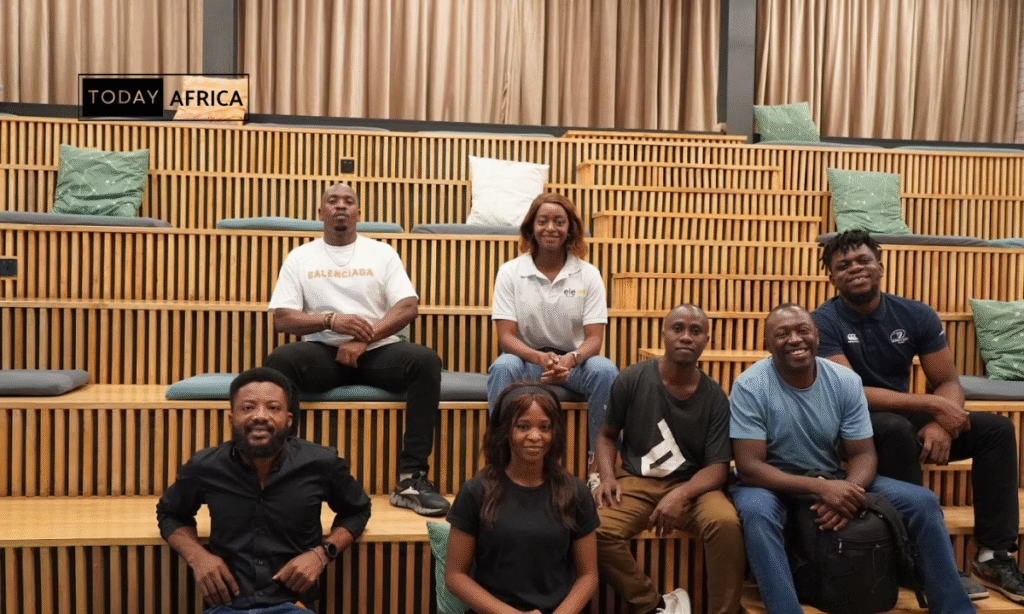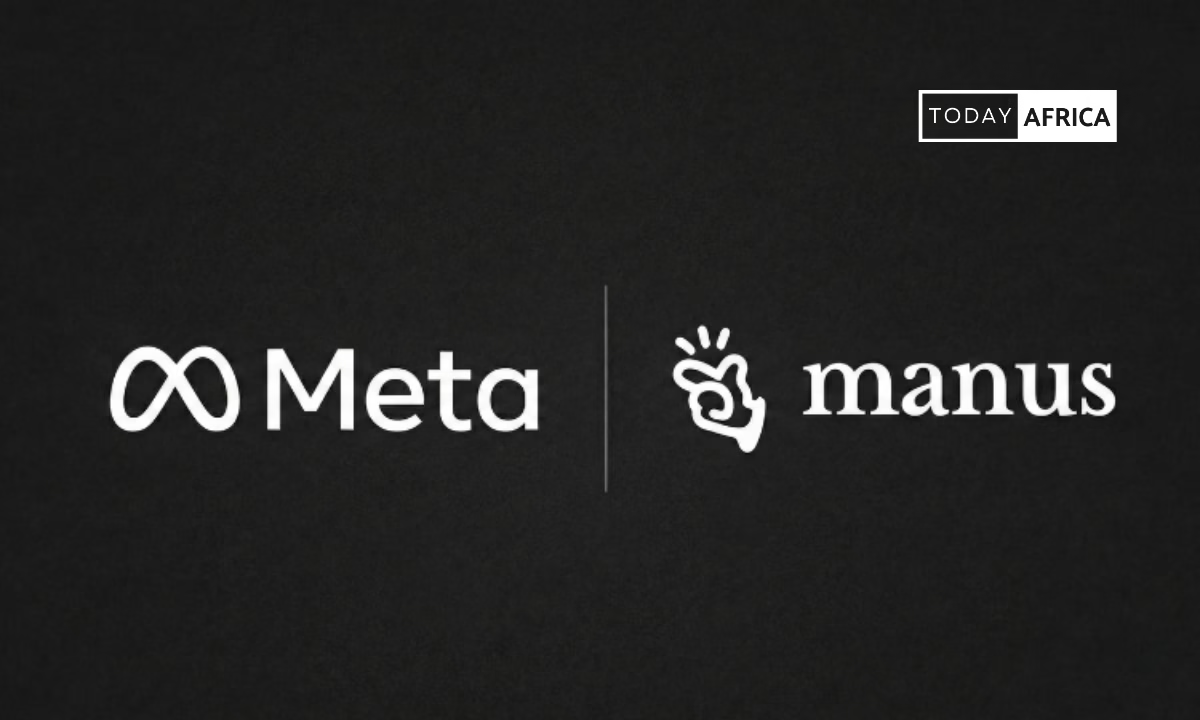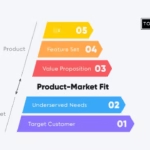So, you’ve built something powerful—a tech solution, a product, or a service that addresses a real challenge in your community.
Maybe it helps farmers access better markets, or streamlines mobile payments, or improves healthcare delivery in underserved areas.
You’re solving a genuine problem, and now it’s time to take things to the next level. But there’s one big question standing in your way: how do you pitch to investors and actually secure funding?
For many first-time African founders, this part can feel like stepping into unfamiliar territory. The investor world has its own language, expectations, and processes, and it can seem intimidating if you’ve never navigated it before.
The truth is, it’s not just about having a great idea. It’s about knowing how to communicate your vision in a way that convinces someone else to back it with their money and trust.
In this article, we’ll walk you through exactly how to pitch to investors—from building a compelling narrative and creating an investor-ready pitch deck, to identifying the right investors, delivering your presentation with confidence, and handling follow-ups like a pro.
Let’s dive in.
Africa’s startup ecosystem
Over the past decade, Africa’s startup ecosystem has evolved dramatically. In 2019, venture capital (VC) investments stood at around $340 million.
By 2022, this figure had skyrocketed to $6.5 billion, according to Partech and AVCA, driven by rising local funds, global investor interest, and African startups tackling key gaps in fintech, e-commerce, logistics, and health.
However, 2023 and 2024 marked a correction. Total VC plus debt funding dropped to $4.5 billion in 2023, and further declined to about $3.5–$3.6 billion in 2024, with equity VC at $2.2 billion.
This was largely due to global economic pressures, but not a full retreat. Investors became more selective, favoring startups with strong fundamentals and clearer paths to profitability.
One standout sector is climate-tech, which raised $1.1 billion in 2023, accounting for nearly a third of all startup funding. The trend continued into 2024, with Kenya alone securing over 60% of Africa’s climate investment through major deals like d.Light and BasiGo.
Major VC firms are doubling down on the continent:
- TLcom Capital closed a $154 million fund in 2023 to support Series A-level investments across sectors like fintech, edtech, and digital infrastructure.
- Partech Africa and Norrsken22 have both launched $200M+ funds targeting emerging startups in Africa, as reported by Financial Times.
What investors look for
Raising capital as a first-time African founder requires more than just a polished pitch deck. Investors are looking for startups with depth—those that are rooted in local realities but ambitious enough to scale across borders.
According to a 2025 report from TechCabal, African VC firms consistently look for eight core attributes in startups:
- Solving real, local problems – Not a copy of Silicon Valley apps, but context-driven solutions.
- Clear market validation – Proof that customers need and want the product.
- Scalable models – Businesses that can expand beyond one city or country.
- Strong unit economics – Investors now expect early signs of viability, not just growth at all costs.
- Resilient founders – Grit, adaptability, and a long-term mindset are highly prized.
- Technical and domain expertise – Teams that understand both the product and the market.
- Cultural intelligence – The ability to navigate diverse consumer behaviors across regions.
- Impact potential – Especially for climate, health, or education startups, measurable societal value is a plus.
Backing this up, a 2024 academic study (published via arXiv) analyzing 2,500+ African startup deals found that investor decisions are heavily influenced by the human capital of the founding team. Specifically:
- Founders with sector experience or technical backgrounds were more likely to receive funding.
- Teams with cross-border potential or regional insight appealed more to pan-African VCs.
- A diverse founding team—especially with gender balance—also boosted investor confidence.
In short, African investors are becoming more sophisticated. They’re no longer just chasing user growth or buzz—they’re backing founders with domain fluency, a roadmap to profitability, and an authentic connection to the problem they’re solving.
See Also: How to Legally Protect Your Startup Idea in Africa
Preparing your pitch deck & story
1. Start with the problem before the product
One of the most common mistakes made by first-time founders is jumping straight into product demos or feature lists. But savvy African investors—especially those who’ve seen countless decks—care more about the problem you’re solving.
Africa Signal emphasizes that your pitch should begin with a vivid, data-backed problem narrative. Consider an example:
“Every day, over 10,000 informal market traders in Accra face cash shortages and unreliable supply chains. This forces them to lose up to 4 hours daily navigating manual payment and logistics processes. That’s nearly 20 hours per week of lost productivity per trader.”
By painting this picture, you hook the investor emotionally and logically. Only after the problem is crystal clear should you introduce your solution.

2. Slide-by-slide blueprint
To succeed at pitching investors—especially in the competitive African VC space—you need a sharp, structured, and visually clear pitch deck.
Here’s the ideal slide sequence, with insights from Pitchwise.se, Wired, InclusiFund, and community advice from Reddit.
1. Title & hook
- Company name, logo, and a strong one-liner.
- Include your name, location (e.g., Nairobi, Lagos), and startup tagline.
2. Problem statement
- Describe the problem clearly and concisely.
- Use data, real-world stories, or analogies.
- Keep it local and relatable.
3. Solution & product
- Showcase how your product works, preferably with a live demo or screenshots.
- Keep text minimal; use diagrams or UI visuals.
- Explain benefits, not just features.
4. Market opportunity
- Use TAM/SAM/SOM framework:
- TAM (Total Addressable Market): “Africa’s B2B logistics market is $24B.”
- SAM (Serviceable Available Market): “Kenya’s SME segment is $2.1B.”
- SOM (Serviceable Obtainable Market): “Targeting 15,000 SMEs in Nairobi by 2025.”
- Avoid vague statements like “1.3 billion Africans.”
5. Business model
- How do you make money? Be clear: “We take a 5% transaction fee per order. Our ARPU is $18/user/month.”
- Show pricing strategy, margins, and cost assumptions.
6. Go-to-market strategy
- Describe how you plan to acquire and retain customers.
- Highlight grassroots tactics like WhatsApp outreach, community partnerships, or mobile agents.
- If available, show:
- CAC (Customer Acquisition Cost)
- Retention rates
- Virality or referral loops
7. Traction & validation
- Share KPIs: revenue, user growth, waitlists, or pilot results.
- Examples:
- “5,000+ sign-ups in 3 months”
- “4 B2B contracts signed worth $100k ARR”
- “Retention of 72% at 3-month mark”
Even if you’re pre-revenue, evidence of demand matters.
8. Competitive landscape
- Use a 2×2 matrix or feature comparison chart.
- Include:
- Direct competitors (e.g., Flutterwave vs. Paystack)
- Indirect/informal alternatives (e.g., cash-based methods, human brokers)
- Explain your unfair advantage: tech, network, licensing, speed, etc.
9. Financials & unit economics
- Keep this slide clean—no complex spreadsheets.
- Show:
- Revenue projections for 3–5 years
- Cost breakdown
- CAC vs LTV
- Gross margins
Example: “Year 1 Revenue: $250k | Year 2: $720k | Gross Margin: 42% | Break-even: Q3, Year 2”
10. Team & founder fit
- Highlight why your team is best to solve this problem.
- Include:
- Domain knowledge (e.g., former agritech operator)
- Startup experience
- Technical co-founder
- Advisors (if relevant)
According to Techpoint Africa and LinkedIn, teams with complementary skills—tech + biz + sector—perform better and attract more capital.
11. Ask & use of funds
- Be specific: “We’re raising $500k to fund 18 months of runway: 40% for product development, 30% for customer acquisition, and 20% for hiring.”
- Avoid asking for vague “growth capital.”
12. Exit or impact vision
- If pitching to impact or climate investors, include:
- Social impact KPIs (e.g., jobs created, emissions reduced)
- Alignment with SDGs
- If pitching to traditional VCs, articulate a long-term vision and possible exit paths: “Exit opportunities include regional acquirers like Jumia or international logistics platforms entering Africa.”
Read Also: Top 15 Grants for African Startups This Year
Crafting your story & presentation style
When it comes to pitching, your numbers matter—but it’s your story that sells.
For first-time African founders, especially those building in emerging or informal markets, a strong narrative can bridge trust gaps, showcase your local insight, and ignite investor interest.
Think of your pitch as both a business case and a personal invitation into your journey.
1. Lead with narrative
Many successful Nigerian founders and seasoned startup coaches stress the power of beginning your pitch with a relatable, personal story that sets the stage.
This is especially important in African markets where investors often look for founders who deeply understand the local context.
For example, instead of opening with a stat or product demo, try something like:
“As a former trader’s assistant in Balogun Market, Lagos, I watched my aunt lose over ₦5,000 daily due to unreliable delivery riders. That frustration led me to build a logistics app that guarantees same-day delivery to informal traders.”
This type of narrative accomplishes three things:
- Builds emotional connection – Investors want to know what drives you.
- Shows domain knowledge – You’ve experienced the problem firsthand.
- Sets up the problem-solution arc – Your startup becomes the hero of your journey.
Tip: Make your story specific, honest, and tied to the problem you’re solving. A generic “I wanted to make Africa better” won’t cut it—investors need to feel your lived experience.
2. Presentation delivery tips
Delivering a strong pitch goes beyond what you say—it’s about how you say it. African investors, especially those operating in Nigeria, Kenya, and South Africa, often value poise, preparation, and presence as much as they do pitch content.
Here’s how to elevate your delivery:
Arrive early
Arriving early for in-person pitches—or joining Zoom meetings a few minutes ahead—shows respect for the investor’s time and signals your organizational discipline. In many local ecosystems, where “African time” is a stereotype, being early sets you apart.
Pitch with confidence & cohesiabon
Deliver your pitch as if the investor is already your strategic partner, not a gatekeeper. This subtle mental shift—from “I’m asking for money” to “We’re building something together”—creates a more collaborative and relaxed atmosphere. It encourages trust and engagement. Use inclusive language: “Together, we can unlock rural last-mile delivery…”
Use simple visuals & minimal text
Avoid cluttered slides. A great pitch deck is visual, clean, and intuitive. Replace dense paragraphs with:
- Product screenshots
- Infographics showing growth
- Icons representing pain points
According to WIRED, investors prefer decks where each slide makes one clear point. Keep fonts readable and consistent, and never read from the slides.
Practice the Q&A like a pro
After your pitch, you’ll likely face 15–20 minutes of questions. Prepare answers to common investor queries, such as:
- What’s your CAC vs. LTV?
- Who are your top competitors?
- What happens if your biggest customer churns?
- How scalable is your model beyond your city or country?
Stay calm, even under tough questions. If you don’t know the answer, it’s okay to say:
“Great question—I don’t have the exact figure right now, but I’ll follow up with it in my post-pitch summary.”
See Also: 20 Most Funded Startups in Africa Still Active This Year
Researching and engaging investors strategically
Raising capital is not just about delivering a good pitch—it’s about finding the right investors and building relationships over time.
African founders often operate in fragmented funding landscapes, so your strategy must be deliberate, relational, and long-term.
1. Identify the right investor type
Not all investors are the same. Depending on your stage, sector, and location, you’ll want to approach specific types of funders:
Angel & founder-investors
Perfect for pre-seed stages (under $100,000), where formal VC funding is rare. Angels offer not just money but often mentorship, network access, and early credibility.
Seed funds & accelerators
If you’re post-MVP and have some traction, consider African programs like:
- MEST Africa: Offers ~$50,000 in seed funding + training in product and go-to-market.
- Seedstars Africa: Targets high-impact startups in underserved regions.
- VC4A: Connects founders to a global network of angel investors and VCs.
These programs don’t just offer funding—they provide structure, community, and credibility.
Series A / early-stage VCs
For startups ready to scale, Series A firms can write $1M–$5M checks. Leading African VCs include:
- TLcom Capital – Focused on African tech scale-ups.
- Partech Africa – Known for backing mobile-driven B2C and B2B startups.
These VCs expect strong traction, revenue, and leadership teams.
Impact / climate investors
If your startup addresses sustainability, agriculture, or health, explore impact-focused funds. In 2023, African climate startups raised over $1 billion, making it the continent’s second most-funded sector after fintech.
Examples of active investors:
- Shell Foundation
- Acumen
- Global Innovation Fund
2. Build relationships before asking for funds
A pitch is not a cold transaction—it’s the culmination of relationship-building. African investors often fund founders they know, trust, or have been watching for a while. Here’s how to start that journey:
Ask for advice, not money (at first)
Instead of starting with a funding ask, reach out to potential investors for feedback on your product or GTM strategy. This creates a soft entry point. Investors are more receptive to helping than being hard-pitched immediately.
Use founder platforms to build visibility
Create a profile on VC4A, which allows you to:
- Showcase your deck and traction
- Take investor-readiness courses
- Join cohorts and mentorship programs
Attend in-person & virtual events
Nothing beats face-to-face networking. Attend pitch competitions, demo days, and summits such as:
- AfricArena
- MEST Africa Summit
- DEMO Africa
- Africa Fintech Summit
These events are goldmines for meeting investors, advisors, and fellow founders.
3. Tier and personalize your outreach
After identifying your target investors, take a methodical approach:
Build an investor tracker
Create a spreadsheet or Airtable with:
- Investor name & firm
- Focus (sector, stage, geography)
- Contact info
- Last fund size & typical check
- Status (Contacted / Replied / Meeting / Passed / Invested)
This helps you stay organized and strategic, rather than random.
Research portfolios
Before reaching out, review each investor’s portfolio:
- Have they invested in similar sectors?
- Do they focus on Nigeria, Kenya, or pan-African markets?
- Do they back first-time founders?
Personalize your approach
African investors are part of a close-knit ecosystem. Cold emails with generic decks often go ignored. Use:
- Mutual connections to make warm introductions
- Twitter/LinkedIn engagement before outreach
- Founder communities (e.g. Future Africa, MEST Alumni) to build rapport
A brief, tailored message > a long, impersonal pitch.
Execution: pitch, follow-up & close
Pitching isn’t a one-time event—it’s a process that unfolds in three stages: the initial pitch meeting, post-pitch follow-up, and ongoing investor engagement.
Many African startups lose momentum by either over-selling during the pitch or under-communicating after it. Let’s break down how to approach each step with clarity and purpose.
1. The pitch meeting
The pitch meeting is your opportunity to present not just your business, but also your vision, character, and leadership style. Remember, especially in the African context, investors are often backing people more than just products.
Start with your story
Your personal journey as a founder is powerful. Investors want to know why you care about the problem you’re solving.
Example: “I grew up in a rural town in Ghana where my mother ran a small store. Every time the power went out, she lost inventory. I realized this wasn’t just her struggle—it was a systemic problem across thousands of small businesses. That’s what inspired me to build [Startup Name].”

This narrative humanizes your venture and builds emotional engagement. According to Launchbase Africa, African investors resonate more with local context and grounded lived experiences than with abstract, Western-style pitch jargon.
Transition smoothly into the problem and market
Once you’ve established the why, transition into the what: clearly define the problem your startup addresses. Use relatable, region-specific data.
“Over 75% of SMEs in Kenya face daily cash flow gaps due to delayed digital payments—costing them over $1.5 billion annually.”
Follow up with your solution, how it works, and why now is the right time.
Keep your pitch concise: 10–12 minutes
Time is crucial. Investors want to assess clarity and direction, not be overwhelmed with slides.
- Limit your core presentation to 10–12 minutes.
- Reserve 15–20 minutes for Q&A—investors use this time to assess your thinking, clarity, and domain expertise.
- Avoid overloading slides – keep visuals minimalist and focus on high-impact visuals like charts, user metrics, and simple diagrams.
Adopt a partnership tone, not a plea
Avoid desperate language like “We just need funds to survive…” Instead, use collaborative, forward-looking phrasing:
“Together, we can scale this solution to reach 100,000 informal retailers in Lagos by 2026.”
Use words like “we,” “scale,” “impact,” and “together” to signal confidence and partnership, not dependency. As Pitchwise.se highlights, investors are more inclined to engage when founders project resilience, collaboration, and leadership.
2. After the pitch: follow-up & diligence
What you do after the pitch often matters more than what happens during it. Many investors don’t say “yes” in the room—they decide later, based on how you follow up, respond to questions, and maintain communication.
Send a thank-you email within 24 hours
Your follow-up should include:
- A thank-you message expressing appreciation for their time.
- Your pitch deck in PDF format.
- Clear answers to any questions they raised that you couldn’t answer during the pitch.
- A personalized note referencing something discussed—this builds rapport.
Maintain periodic updates—whether or not they invest
Building long-term investor relationships is key in Africa. Even if an investor doesn’t commit immediately, they might come on board later or introduce you to others.
- Send monthly or quarterly updates highlighting:
- Revenue or user growth
- Product updates or new launches
- Team hires or key milestones
- New partnerships or customers
As VC4A emphasizes, even non-invested contacts can become valuable allies. Consistent communication fosters trust and credibility.
Prepare a professional data room
If an investor expresses interest in due diligence, they’ll request access to a data room. This is a secure folder (Google Drive, Dropbox, Notion, etc.) with critical documents that show your business is organized and investable.
Your data room should include:
- Pitch deck (updated version)
- Incorporation documents
- Cap table (showing equity ownership and previous investments)
- Financial statements & projections
- Customer testimonials or pilot results
- Team CVs and advisor profiles
- Intellectual property (IP) documents (if applicable)
Read Also: These 3 Entrepreneurs are Revolutionizing Agriculture in Tanzania
Negotiating & understanding term sheets
Once investors show intent to invest, the negotiation begins—usually in the form of a term sheet. This is a non-binding agreement that outlines the key terms and conditions of the investment. It’s critical to understand what you’re signing.
1. Key terms to focus on
Valuation and dilution
Valuation determines how much of your company you’re giving away in exchange for capital. At the seed stage:
- Most African startups dilute 10–20%.
- Avoid chasing high valuations too early—it can hurt you in future rounds if you don’t hit expected milestones.
- Be prepared to defend your valuation with traction metrics, market size, and comparable deals.
Pro Tip: Use “valuation brackets” rather than hard numbers when negotiating. Say: “We’re targeting a $2M–$3M valuation based on X metrics.”
Liquidation preference
This defines how investors are repaid in the event of an acquisition or company sale.
- 1× non-participating is the founder-friendly standard—investors get back their money before any profits are shared, but they don’t double dip.
- Avoid participating preference, which lets investors take their money back and participate in profit sharing—it’s often unfair at early stages.
Board structure & voting rights
Some investors may ask for a board seat. This isn’t always bad—but you must consider:
- How many seats are given to founders vs. investors?
- Do investors have veto rights on major decisions?
- How will the board affect your agility?
Aim to retain control over key decisions, especially in early stages.
Vesting & founder clauses
Standard vesting terms:
- 4-year vesting with a 1-year cliff is normal—this protects the company if a co-founder leaves early.
- Some term sheets include founder “bad leaver” clauses or anti-dilution clauses—read these carefully.
If a clause seems aggressive or unclear, pause and consult a lawyer or advisor.
2. Seek legal support
Don’t sign a term sheet without a clear understanding of the terms and implications. Many African founders make avoidable mistakes by signing deals they later regret.
Why legal help matters:
- Legal language is often misleading if you’re not experienced.
- Local regulations vary—your lawyer should understand African startup environments and laws.
- If funding comes from international investors, you’ll need to consider tax, IP ownership, and repatriation clauses.
You can:
- Use startup-friendly law firms offering discounted services (some accelerators help with this).
- Leverage platforms like VC4A or Launchbase Africa, which have legal resource kits for African founders.
- Even if you can’t afford a full-time lawyer, spend on a one-time contract review—it could save your company.
See Also: Why Freelancing in Africa is Booming (& How You Can Profit From It)
Common mistakes African founders should avoid
When learning how to pitch to investors, especially within the African startup landscape, avoiding certain missteps can mean the difference between a successful raise and a missed opportunity.
Many first-time founders fall into patterns that seem harmless but actually signal unpreparedness to potential investors. Let’s explore these common mistakes and how to avoid them.
1. Skipping the problem
One of the most frequent—and fatal—errors founders make is diving into the product or solution too early. Investors want to understand the why behind your startup before they care about the what.
If you jump straight into features, dashboards, or demos without framing the problem you’re solving, your pitch lacks context and urgency.
Example: Instead of starting with “We built an app that connects farmers to logistics providers,” start with: “Across East Africa, over 50% of perishable crops spoil before reaching market due to lack of reliable logistics. Smallholder farmers lose thousands annually.”
Why it matters: A well-defined problem creates emotional and business resonance. It shows you understand the market pain and have crafted your product as a response—not just as an idea looking for validation.
2. Over-inflating the market
Statements like “Our solution targets 1.3 billion Africans” or “We serve all African SMEs” are red flags for investors. These claims suggest the founder hasn’t done the work to define a clear target market or go-to-market strategy.
Instead, investors want to see specificity and segmentation:
- What country, city, or region are you starting with?
- Who is your ideal customer in the first 12–18 months?
- What is your Serviceable Obtainable Market (SOM)?
Example: “Our first target is 200,000 informal traders in Nairobi who spend an average of $30/month on airtime. Our MVP has been piloted with 1,200 users in this group.”
Broad, generic markets dilute your value proposition. Investors back focused startups that scale gradually—not ventures trying to boil the ocean.
3. No clear business model
Many founders—especially in Africa’s rapidly growing tech scene—focus on user growth, downloads, or sign-ups and assume the business model can come later. But investors are not just betting on adoption; they want a clear path to monetization and profitability.
A great pitch answers:
- How do you make money?
- Who pays—users, advertisers, third parties?
- Are your unit economics viable? (e.g., LTV > CAC?)
Example: “We charge SMEs a monthly subscription of $20. With 3,000 paying users today, our MRR is $60,000, growing 12% month-over-month.”
Even if your product is pre-revenue, showing a well-thought-out monetization plan is key.
4. Missing team credibility
A groundbreaking idea or powerful solution won’t get far if investors doubt whether the team can execute. This is especially true in Africa, where local knowledge and contextual insight can be more valuable than flashy resumes.
Founders should clearly demonstrate:
- Relevant experience in the sector.
- Deep understanding of the local environment.
- Complementary skills across co-founders (e.g., product, operations, sales).
Example: “Our co-founder led logistics for Jumia’s Kenya unit, managing a team of 40+ drivers. I previously scaled a mobile wallet startup from 0 to 100K users.”
If your team lacks direct experience, compensate with advisors or partners who bring that credibility.
5. Claiming no competition
Saying “we have no competition” is a glaring red flag. Every problem has existing solutions, even if informal or inefficient. What investors want to know is how you’re different, better, or more suitable for your target audience.
Example: “Our primary competitors are mobile agents who serve communities manually. Unlike them, we offer on-demand service via app, reducing service time by 60%.”
Smart founders:
- Acknowledge direct and indirect competitors.
- Map them in a 2×2 matrix or similar comparison.
- Clearly show their unfair advantage—be it technology, partnerships, pricing, or UX.
Read Also: From Idea to IPO: African Startups Making Global Headlines
Conclusion
Learning how to pitch to investors isn’t about mimicking Silicon Valley slides or quoting billion-dollar markets. It’s about telling an authentic, grounded, and compelling story backed by data and execution capability.
For African founders, this means contextualizing your solution within your local market, proving your team’s ability, and demonstrating real traction or insight into your users.
Whether you’re pitching in Lagos or inNairobi, the principles remain the same:
- Start with the problem.
- Speak with clarity.
- Show your numbers.
- Be honest about challenges.
- Prove you’re the right team to win.
Take your next step now:
- Audit your pitch for the mistakes above.
- Refine your pitch deck with focused slides.
- Reach out to an investor or mentor this week for feedback.
- Practice your delivery—because your confidence can make the difference.
FAQs
How long should my pitch deck be?
Keep it short and impactful—10 to 12 slides max. Focus on essentials: problem, solution, market, business model, traction, team, financials, and the ask. Clear visuals and minimal text are ideal.
When is the right time to pitch investors?
You should pitch once you have a Minimum Viable Product (MVP) and early signs of traction—this could be pilot usage, pre-orders, or even LOIs. Investors want proof that you’ve validated demand.
What is traction if I don’t have revenue yet?
Traction can include:
- Waitlist signups
- Retention rates or DAUs
- Partnership agreements or pilot contracts
- Testimonials from users
How do I find investors aligned with my sector?
Start by researching African-focused investors on platforms like VC4A, Crunchbase, and local pitch competitions. Attend summits like AfricArena, MEST Africa Summit, and Startup Grind. Use warm introductions from accelerator networks or founder communities.
How can I stand out in a competitive pitch room?
Authenticity wins. Tell your story from the heart. Investors are drawn to founders who show confidence, deep local insight, and honesty about challenges. Pair that with strong traction metrics and a realistic go-to-market strategy, and you’ll stand out from the crowd.
Leave a comment and follow us on social media for more tips:
- Facebook: Today Africa
- Instagram: Today Africa
- Twitter: Today Africa
- LinkedIn: Today Africa
- YouTube: Today Africa Studio
















